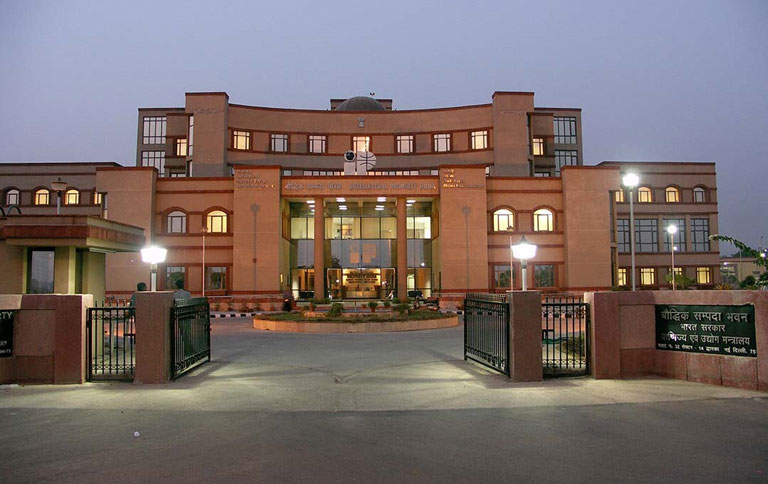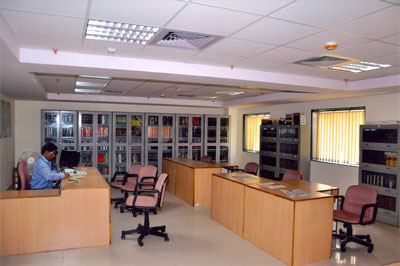
India’s IP ecosystem 2.0
By Chaitanya Prasad, Former Controller General of Patents, Designs and Trade Marks, India
The Intellectual Property Office (IPO) of India, also known as the Office of the Controller General of Patents, Designs and Trademarks (CGPDTM), manages and oversees the operations of the patent office and the trademark registry at multiple locations across India: Chennai, Delhi, Kolkata and Mumbai as well as a trademark office in Ahmadebad. Chennai and Kolkata also have a geographical indications registry and a designs wing, respectively. The IPO is also responsible for managing the National Institute of Intellectual Property Management at Nagpur. It plays a key role in promoting the use and awareness of the IP system across the country.

Since Indian laws became fully compliant with the Agreement on Trade-Related Aspects of Intellectual Property Rights (TRIPS) in 2005, IP filing rates have increased steadily. To keep pace with the growing demand for IP rights, the IPO has overhauled its operations, putting into place a robust, accessible and transparent electronic service delivery platform.
Users can now access a comprehensive suite of secure online services that make it easier for them to submit their IP applications and track their status in real time. Secure personal e-dossiers give quick access to all relevant documentation, while a comprehensive payment gateway makes fee payment easier (via debit or credit cards, e-banking or directly with over 70 banks). And those using the IPO’s web-based services benefit from a 10 percent discount on all applications filed online. Within months of implementing these measures, e-filing of patent applications rose dramatically, from 30 percent to around 78 percent of all filings (in March 2014).
Small, medium and micro-enterprises (SMMEs) are highly innovative and play a key role in driving national economic growth and wealth creation. With a view to promoting greater IP use by SMMEs, in 2014 the IPO created a new “small entity” category of users. Companies falling within this category (both domestic and foreign) enjoy a 50 percent fee discount.
Making it easier to apply for patents internationally
The opportunities afforded by globalization and the digital revolution mean that many more Indian companies are aspiring to gain a foothold in global markets. WIPO’s Patent Cooperation Treaty (PCT) offers them a cost-effective and efficient way to protect their cutting-edge technologies in up to 148 countries.
India became a member of the PCT in 1998. In that year, just 14 international applications were filed by Indian inventors under the PCT; in 2014 that figure stood at 1,428. To ensure that Indian companies benefit fully from India’s membership of the PCT, the IPO is itself actively embracing and promoting the use of PCT-related services to expand access to a broader range of cost-effective services that simplify and streamline the process of protecting patents internationally.
India takes on international patent search responsibilities
In October 2013, the Indian IPO became an International Searching Authority and International Preliminary Examining Authority (ISA/IPEA) under the PCT, joining 20 other countries in fulfilling that role.
After an international application is filed under the PCT, a search is performed by an ISA to identify the most relevant prior art documents relating to the claimed invention. That search results in an International Search Report and a written opinion about the patentability of the invention. Thereafter, an applicant may optionally request that an IPEA formulates an additional opinion on patentability, perhaps on an amended version of the application.
Acquiring ISA/IPEA status highlights the fact that Indian companies now have easier access to local high-quality IP services in addition to those already available from other ISAs. With its own patent database and access to others around the globe, the IPO offers top quality patent search reports at extremely competitive prices.
Indian trademarks gain international access
With the accession of India to the Protocol Relating to the Madrid Agreement concerning the International Registration of Marks in July 2013, Indian companies also have access to a simple, cost-effective and user-friendly means of protecting their brands in global markets. With a single application in one language, and with one set of fees, applicants can register their trademarks (and thereafter manage them) online in up to 96 countries. The Madrid System is a gateway to global markets for Indian applicants and also opens the door to foreign companies seeking to establish operations in the Indian market.
Transparency and ease of access
The IPO is developing systems in line with the evolving needs of stakeholders. Its use of innovative service delivery tools means it is now one of the most transparent IP offices in the world. These tools include:
- A “Stock and Flow” utility, accessible on the IPO website, which provides an overview of the work of the office providing information on work inputs and outputs at various critical points.
- Dynamic utilities that track the journey of an application from its submission through to the issuance of examination reports and its outcome.
- Real-time lists of patents that have lapsed or ceased in specific technology fields.
Challenges
But notwithstanding the many improvements in India’s IP ecosystem in recent years, challenges remain.
The main duty of a national patent office is to ensure that patent applications are processed in accordance with national patent law. The quality of the rights granted is a particularly important aspect of this work and remains a challenge for the Indian IP Office and for most other national offices around the world.
Ensuring high-quality examination of IP titles
Patent examination is specialized work that requires sound scientific and technical expertise. To ensure patent (and trademark) examination in India are of high quality – that is, uniform, consistent and transparent – the IPO has taken a number of steps, as follows:
- Specialized technical groups have been established to ensure access to relevant expertise for examination. In consultation with stakeholders, guidelines have been established to address complex examination questions arising in specific technology fields, including traditional knowledge and biological material, biotechnology, pharmaceuticals and computer-related inventions. Guidelines on comprehensive search and examination are also under development.
- The Patent Office Practice and the Manual of Patent Office Practice and Procedure, guides for the IPO and applicants, have been published to enhance transparency, uniformity of practice, operating efficiency and accountability. A Manual of Trade Mark Practice and Procedure is also under development.
- Quality management teams have been established in the patent office to monitor the quality of patenting processes.
- An objective performance evaluation system based on credit points is in place in the patent office.
- The geographical indications registry in Chennai and the designs wing in Kolkata have been awarded ISO 9001 certification.
- Steps are being taken to access WIPO CASE, a platform for sharing search and examination reports issued by IPOs in other jurisdictions.
- In 2011 and 2012, over 150 patent examiners were recruited and trained by leading practitioners and international experts. Training included a three-month residential course at the National Institute of Intellectual Property Management, on-the-job training for eight months in the patent office and a one-month advanced training program.
- Training programs are also offered to examiners and controllers to improve their legal and technical capabilities and so enhance the overall quality of examination.

a central role in catering to the training needs of a broad range of stakeholders.
(photo: Courtesy from Office of the Controller General of Patents,
Designs and Trade Marks, India).
Rising demand for IP rights
Despite significant achievements in increasing output, India’s IPO is struggling to keep pace with the volume of applications it receives. To reduce these backlogs, over 1,000 new posts are to be established within the IPO and various other measures are being implemented to further enhance digital operations within India’s IP ecosystem. These include internal electronic transfer of files between local patent offices and paperless processing of patent applications. The Government’s aim is to ensure that India’s IP services are on a par with the best in the world.
Dissemination of IP information
Applicants are understandably keen to learn about the status of the applications they file. In the uncertain world of business, legal certainty about IP rights creates opportunities for business growth. In response to this need, the IPO has enhanced its website to ensure easy access to the information applicants require to file their IP applications. In addition to being able to check the real-time status of their IP applications and consult all related documentation around the clock, applicants can use the fully searchable IP databases. These are useful to companies seeking to clear trademark rights or to gain a better understanding of the patent landscape for a given technology. These resources are also useful to researchers and SMMEs when seeking to identify public-domain technologies which may be used without fear of infringement.
Increasing IP awareness
The IPO is committed to ensuring that right holders’ interests are upheld and that creators and inventors are recognized and rewarded for their ingenuity. As India becomes a knowledge-based economy, building a broader understanding of how IP can add value and improve competitiveness is critical. Building IP awareness and strengthening understanding of how IP can drive business growth, create employment and spur economic development are key priorities.
Training of different stakeholders is an important part of this effort. The National Institute of Intellectual Property Management in Nagpur plays a central role here and caters to the training needs of a broad range of stakeholders.
Through its outreach efforts, the IPO seeks to maximize industry participation by engaging with industry associations such as the Federation of Indian Chambers of Commerce and Industry (FICCI), the Confederation of Indian Industry (CII) and the Associated Chambers of Commerce and Industry of India (ASSOCHAM). Also, through its Cluster Program, the IPO targets specific industries and sectors, for example SMMEs operating in the leather, auto and textiles industries. The aim is to promote a better understanding of how IP can support businesses and business growth. Similarly, the Academic Institutions Program targets graduates, young university professionals, researchers and government officials dealing with IP rights.
In terms of reaching out to the public, every year India actively participates in World Intellectual Property Day celebrations. Within this context, the IPO confers various National IP Awards to showcase and celebrate India’s inventors and creators and to promote a culture of creativity and IP awareness across the country. IP-related debates and competitions are also promoted in schools, and national media is actively encouraged to air programs in different regional languages on a variety of IP-related questions.
India’s commitment to establishing a robust, streamlined, cost-effective and transparent IP ecosystem that serves the needs of its innovative and rapidly expanding economy are beginning to pay off. While the increasing demand for IP rights continues to present logistical challenges, the radical transformations that have taken place and the development of a well-trained body of professionals mean that India is better placed to manage its workload. Within a few years, there is no doubt that the range of services and the level of service delivery available within India’s IP ecosystem will match the best in the world.
The WIPO Magazine is intended to help broaden public understanding of intellectual property and of WIPO’s work, and is not an official document of WIPO. The designations employed and the presentation of material throughout this publication do not imply the expression of any opinion whatsoever on the part of WIPO concerning the legal status of any country, territory or area or of its authorities, or concerning the delimitation of its frontiers or boundaries. This publication is not intended to reflect the views of the Member States or the WIPO Secretariat. The mention of specific companies or products of manufacturers does not imply that they are endorsed or recommended by WIPO in preference to others of a similar nature that are not mentioned.